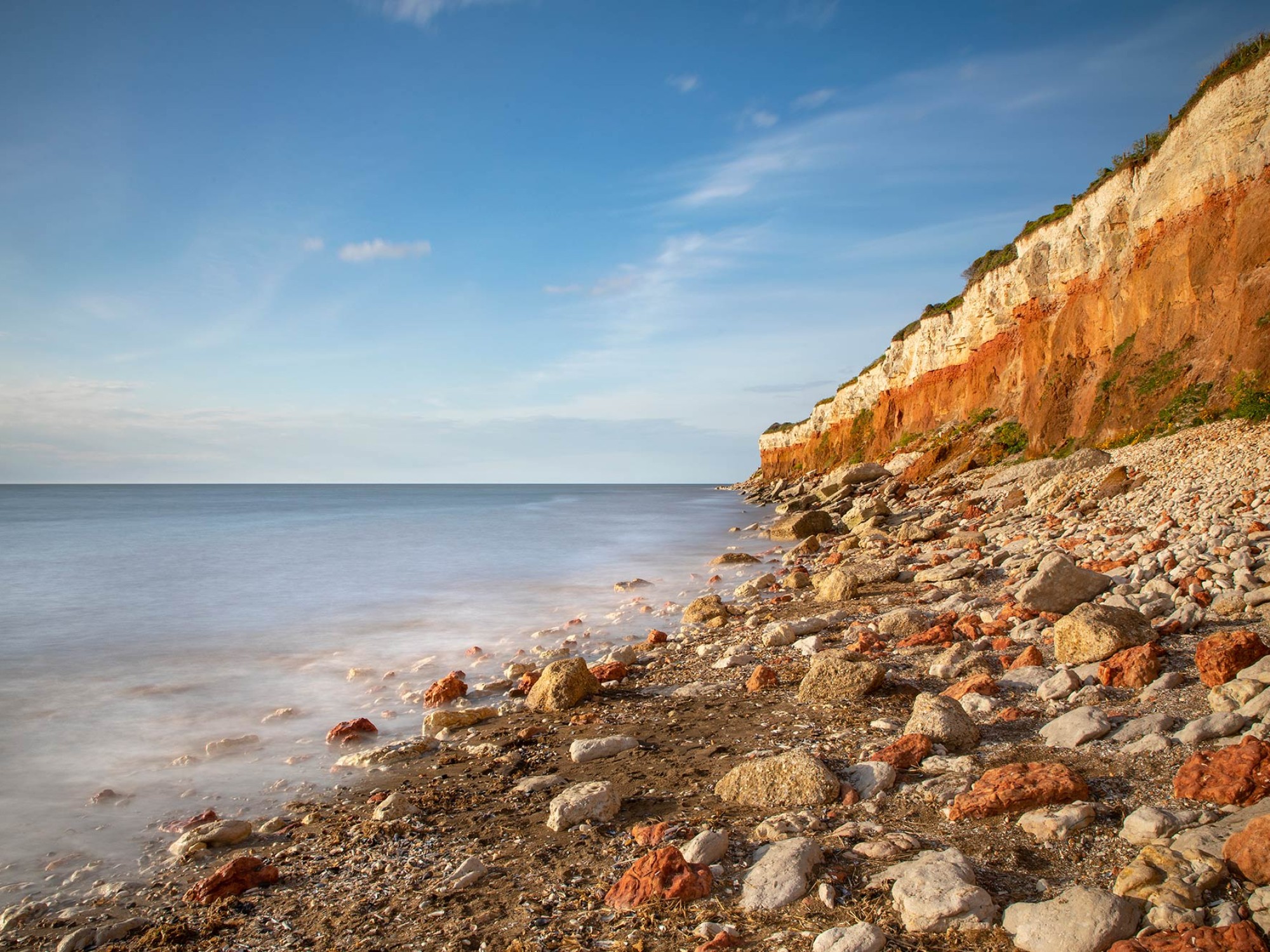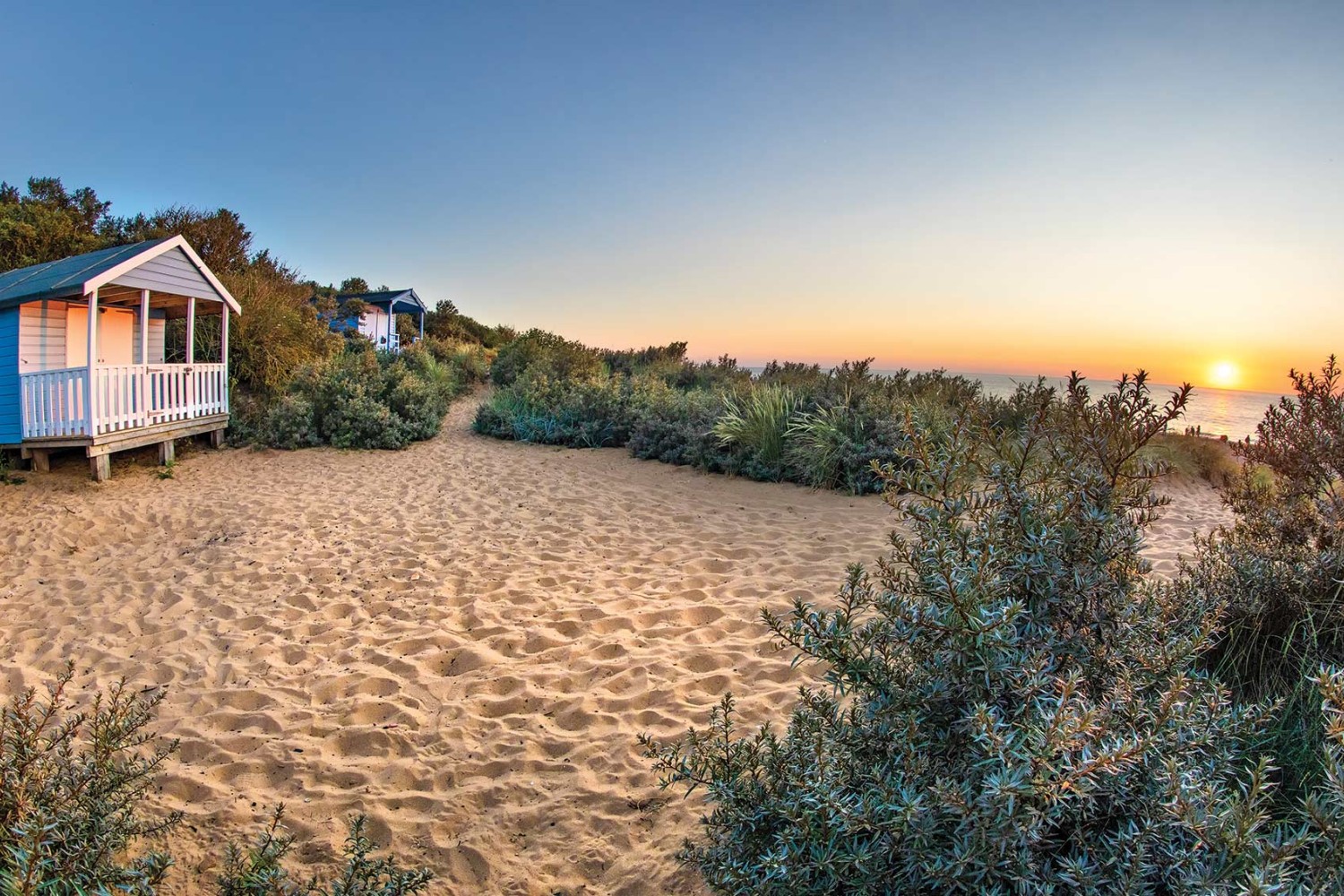
The very long story of Hunstanton’s cliffs
The White Cliffs of Dover are perhaps our country’s most famous cliffs, but Hunstanton’s are easily the most attractive, being admired by people around the world - including local lords and savvy smugglers
The late evenings bringing a refreshing breeze to a hot summer’s day are the perfect time to wander along the coast of Hunstanton towards the cliffs, because as the sun sets over the sea, the cliffs are bathed in glorious warm light.
They’re brown, they’re red and they’re white. It’s a three-layer face that’s unique to Britain, but how did these distinctive cliffs earn their stripes?
Unsurprisingly, the bottom layer was formed first.
“The base of the cliffs consists of red-brown carstone, which is a type of sandstone,” says Naomi Stevenson of Green Geology. “It was laid down in shallow marine conditions some time during the Cretaceous period.”
That was over 70 million years ago, when the cliff base was actually under the sea. When ocean creatures died, their remains landed on the carstone and became fossilised over time. You can still find these fossils nestled in the second and third layers.
“The red rock is actually chalk - the red colour comes from iron pigment,” says Naomi. “It would have been formed much later after the carstone and it contains the most fossils. The white stripe that marks the top of the cliffs is also chalk, laid in the late Cretaceous period around 66 million years ago.”
Both the red and white chalk are made of limestone, which more commonly forms in tropical climates. This tells geologists and historians that Hunstanton once had a much warmer climate, far hotter than our most sweltering sunny days.
As the planet aged and sea levels dropped, the prominent cliffs could finally be appreciated by land-dwelling creatures, and when humans came along, settlements began popping up in the area.
Proximity to the sea was useful for trading and transport, but eventually a few people found a more nefarious use for the easily-recognisable cliffs.
It was 1784, and on the shore of Hunstanton beneath the cliffs, customs officers were hiding in the night, waiting. Smuggling was rife in Norfolk, and they’d already seized some illegal imports of gin, rum and brandy.
The officers knew the ways of the smugglers. They’d sit offshore in small boats and wait for a signal to tell them it was safe to dock and unload the goods. The signal was given by a man who stood at the top of the Hunstanton cliffs, which were so identifiable the smugglers found them an easy place to disembark. Unfortunately for them, the customs officers knew that too.
Captain William Kemball and two of his crew were arrested by the revenue officers, backed by soldiers of the 15th Light Dragoons, but they didn’t give up without a fight. They fatally wounded officer William Green and soldier William Webb, and they’re now buried at St. Mary’s church in Old Hunstanton.

The bleak conflict of smugglers versus revenuers soon departed the shores of Hunstanton, and a century later Henry Styleman Le Strange of Hunstanton Hall stood atop the cliffs, an idea springing to mind.
Victorians had become charmed by trips to the seaside, which was said to be rejuvenating, and many of the upper classes flocked to beaches, eager to escape the smog-ridden cities.
With the expansion of railways across the country, people from other classes were finally able to pay for a ticket and enjoy a break on the coast too.
Henry Le Strange is the man responsible for turning what was originally called ‘New Hunstanton’ into a desirable holiday destination. When the train line from King’s Lynn to Hunstanton was built, passengers were able to step from the carriages straight onto the promenade.
A grand pier stretching 830ft into the sea opened on Easter Sunday in 1870, allowing visitors to appreciate the beauty of Hunstanton from afar, and when they looked to the left, the dramatic striped cliffs loomed over the waves.
Today, the cliffs at Hunstanton have been designated an Area of Outstanding Beauty, and it’s easy to see why. Generations of families from all over the country (and around the world) have made the trip to Norfolk to see the cliffs, and there’s certainly no sign of that changing.
With people keen to get back outside and breathe in the sea air after so long away, it’s been reported that there has been a serious shortage of beach huts for sale, with only two currently available in the whole of Norfolk.
Which means you may be very lucky if you’re looking to rent one of the colourful huts perched in the dunes of Old Hunstanton, so it may be a while before you can make that glorious view of Hunstanton’s stunning cliffs a more permanent one.

